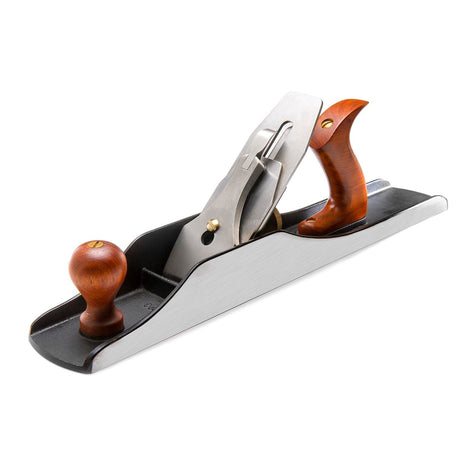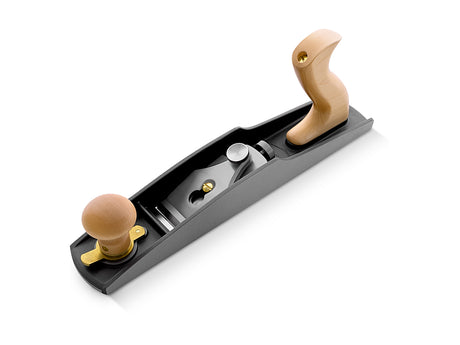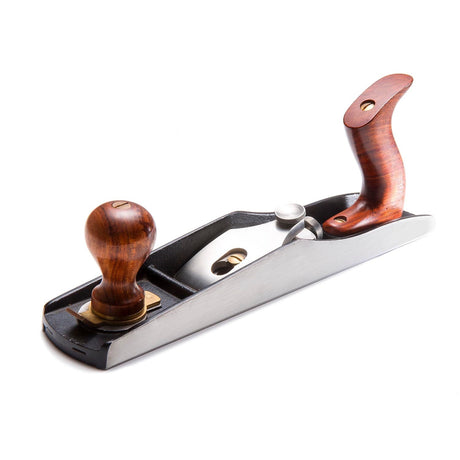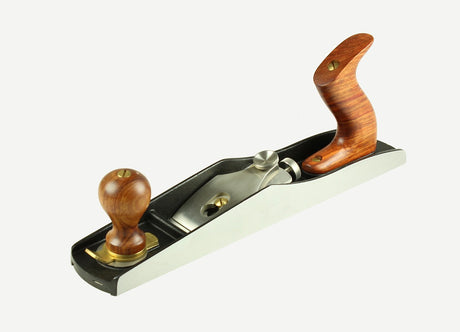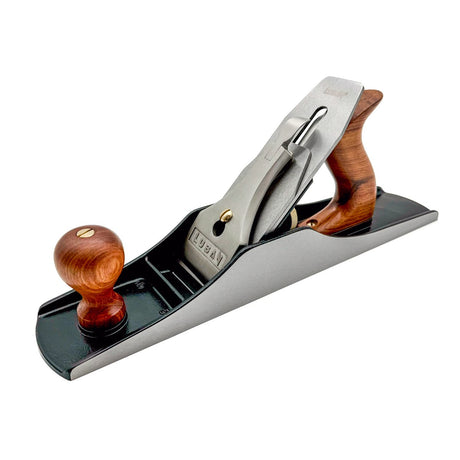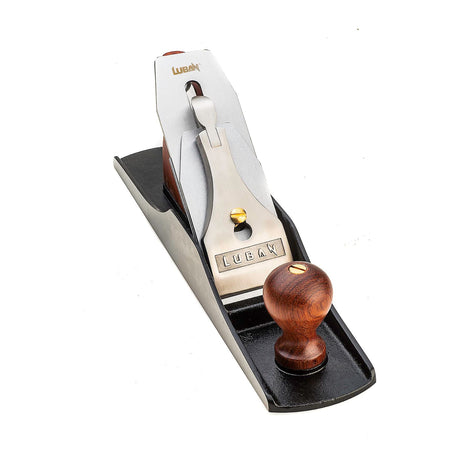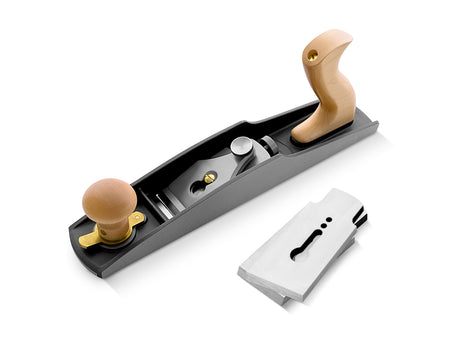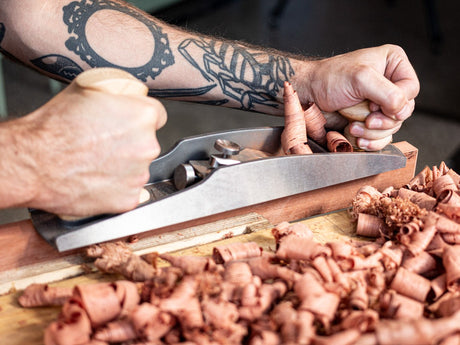Melbourne Tool Company
Melbourne Tool Company Low Angle Jack Hand Plane
$349.00Unit price /UnavailableIn stockMelbourne Tool Company
Melbourne Tool Company Low Angle Jack Plane Plus Additional Blades
$399.90$448.80Unit price /UnavailableIn stock
The Versatility and Importance of Jack Planes in Woodworking
Jack planes are the quintessential all-rounders in hand planing, making them an essential addition to any woodworker’s toolkit. Measuring approximately 14 inches in length, these planes are perfect for flattening rough stock, preparing surfaces for joinery, and general smoothing. Often referred to as the "jack of all trades", they can be tuned for either rough removal or fine finishing, depending on the blade camber and setup.
One of the major strengths of the jack plane lies in its adaptability. By cambering the blade, it can act like a scrub plane for rapid material removal. Conversely, with a finely honed straight edge, it becomes an effective smoothing tool. Woodworkers often use the jack plane after initial dimensioning and before precision jointing or smoothing, bridging the gap between rough and refined.
Choosing the right jack plane involves considering the sole material, blade quality, and adjustability. Cast iron bodies are commonly favoured for their balance of weight and durability, while ductile iron variants offer added resilience. High-carbon steel blades are easy to sharpen and ideal for regular maintenance, whereas A2 steel holds an edge longer — a useful trait when planing dense hardwoods.
To optimise performance, regular maintenance is key. Flatten the sole as needed, keep the blade sharp, and lubricate moving parts for smooth operation. A well-tuned jack plane not only improves the efficiency of your workflow but also elevates the overall finish quality of your workpieces. Whether you're building furniture or crafting cabinetry, the jack plane remains a trusted workhorse for shaping and refining timber.
FAQs
What is a jack plane used for?
A jack plane is used for general-purpose flattening, smoothing, and shaping of timber. It's often employed to remove rough stock quickly or prepare boards for final planing and joinery.
How is a jack plane different from a smoothing or jointer plane?
Jack planes are mid-sized and versatile, ideal for both rough and semi-fine work. Smoothing planes are shorter and used for final surface preparation, while jointer planes are longer and used for straightening edges and faces over longer spans.
Can I use a jack plane as a scrub plane?
Yes. By cambering the blade (creating a slight curve) and opening the mouth, a jack plane can efficiently remove large amounts of material, mimicking the action of a scrub plane.
What blade angle is best for hardwoods?
A bevel angle of 25°–30° is standard, but for hardwoods, a slightly higher micro-bevel can reduce tear-out. A2 tool steel blades also maintain sharpness longer under heavy use.
How do I maintain a jack plane?
Regularly hone the blade, check and flatten the sole, clean debris from the mouth, and apply light oil to moving parts. Store in a dry place to avoid rust and ensure longevity.
What timber types can a jack plane handle?
Jack planes can handle a wide variety of softwoods and hardwoods. With proper blade sharpness and mouth adjustment, they perform well even on figured or interlocked grain.
Are jack planes suitable for beginners?
Yes. They are a great entry point into hand planing due to their versatility. Beginners can learn both rough and fine planing techniques using a single tool.
Should I choose a wooden or metal jack plane?
Metal-bodied planes are more common and offer adjustability and consistency. Wooden planes are lighter and glide more easily, but require more finesse to set and use effectively.
How do I set up a jack plane for fine finishing?
Use a sharp blade with a slight camber or straight edge, set a fine depth of cut, and close the mouth for minimal tear-out. Practice on scrap timber to dial in the ideal setup.

